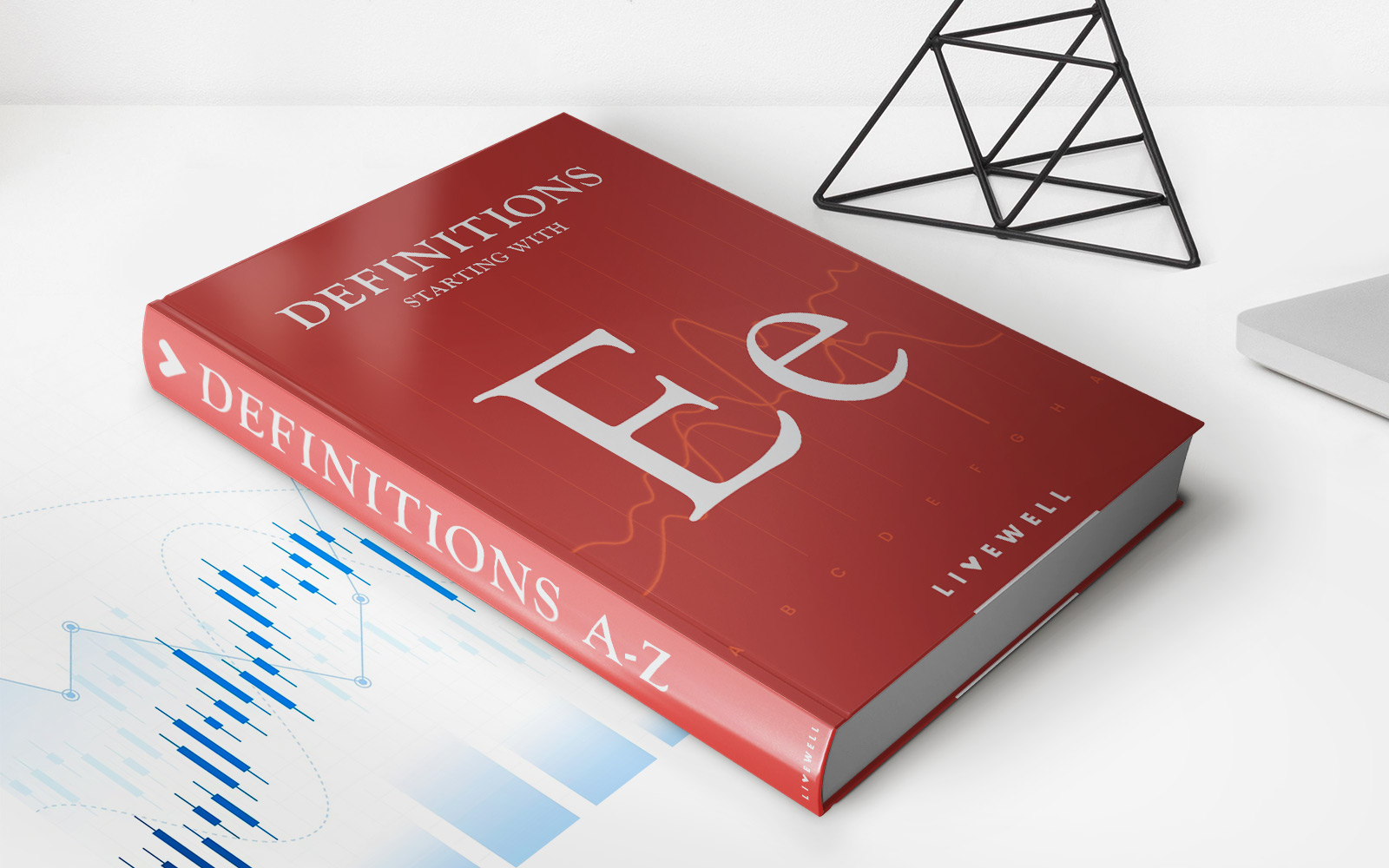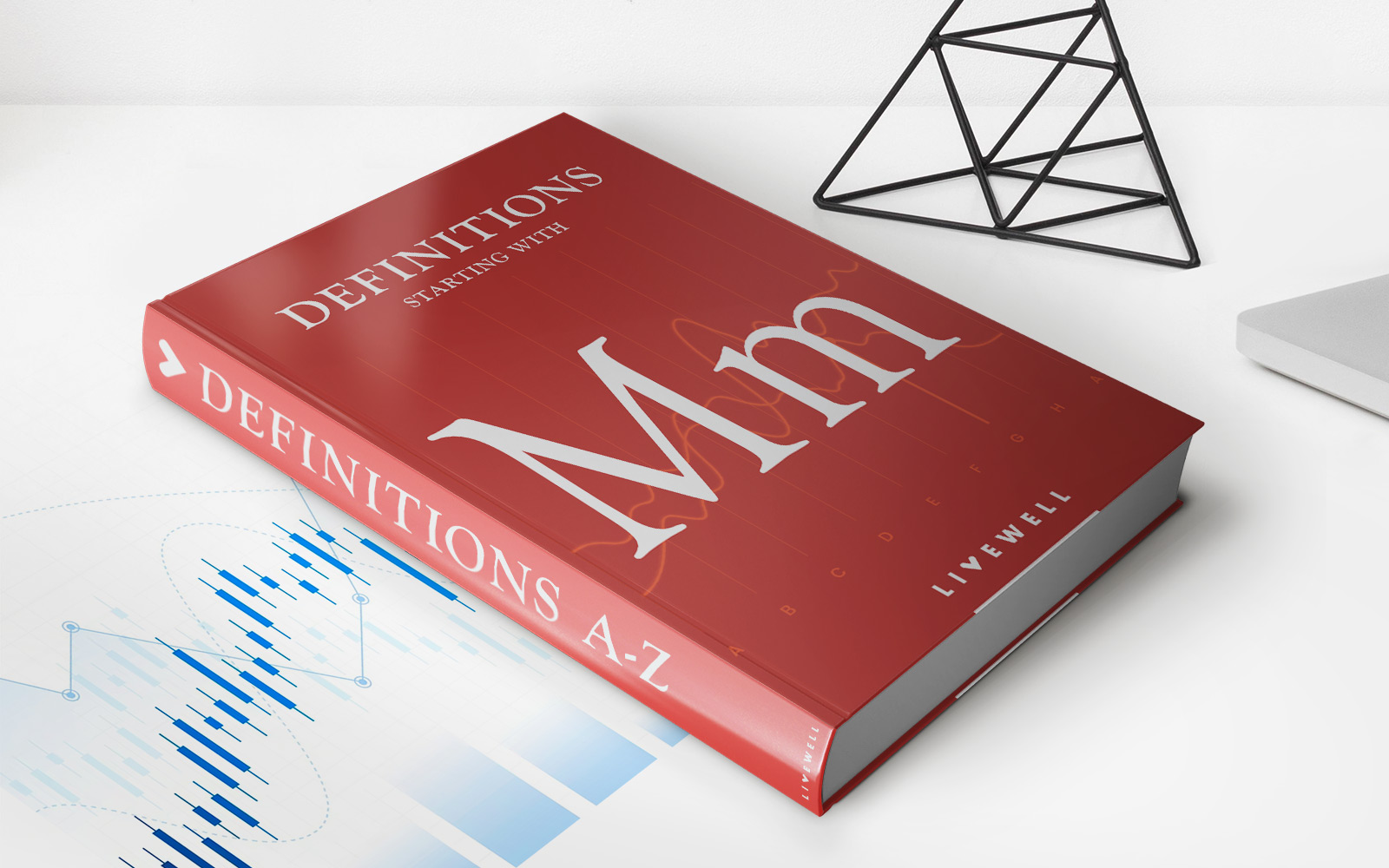Home>Finance>When Should You Invest Your Money Rather Than Put It In A Savings Account


Finance
When Should You Invest Your Money Rather Than Put It In A Savings Account
Modified: December 30, 2023
Discover when it’s wise to invest your money instead of keeping it in a savings account. Gain financial insights and make smart financial decisions.
(Many of the links in this article redirect to a specific reviewed product. Your purchase of these products through affiliate links helps to generate commission for LiveWell, at no extra cost. Learn more)
Table of Contents
- Introduction
- Understanding the Purpose of a Savings Account
- Assessing Your Financial Goals
- Evaluating Risk and Returns
- Considering Time Horizon
- Analyzing Market Conditions
- Diversification and Asset Allocation
- Tax Implications
- Inflationary Factors
- Investing in Bonds, Stocks, and Mutual Funds
- Weighing the Pros and Cons of Investing vs. Saving
- Making Informed Financial Decisions
- Conclusion
Introduction
When it comes to managing your finances, one of the key decisions you need to make is how to allocate your money. While keeping your funds in a savings account is a safe and reliable option, investing your money can potentially offer higher returns and long-term growth. However, knowing when to invest and when to prioritize saving can be a challenging task.
A savings account is a basic banking product that allows you to deposit money and accrue interest over time. It provides a low-risk way to store your funds and ensures easy accessibility when needed. Savings accounts are typically offered by banks and credit unions, and they offer a fixed interest rate that can vary based on market conditions.
On the other hand, investing involves putting your money into various financial instruments such as stocks, bonds, and mutual funds, with the goal of earning higher returns over time. While investing carries a certain level of risk, it also offers the potential for greater financial growth.
So, how do you determine when to invest your money rather than keep it in a savings account? The answer lies in assessing your financial goals, evaluating risk and returns, considering time horizon, analyzing market conditions, and understanding the advantages and limitations of both options.
By considering these factors and making informed decisions, you can optimize your financial strategy and potentially achieve your long-term goals.
Understanding the Purpose of a Savings Account
A savings account serves several important purposes in your financial journey. Firstly, it provides a safe place to store your money, as funds in a savings account are typically insured by governmental agencies, such as the Federal Deposit Insurance Corporation (FDIC) in the United States.
In addition to security, a savings account also offers you easy access to your funds. You can deposit and withdraw money as needed, making it a convenient option for short-term expenses or emergency situations.
Another key feature of a savings account is the interest it earns. While the interest rates on savings accounts may not be as high as those offered by other investment vehicles, such as stocks or bonds, they still provide a modest return on your deposits. This can help to preserve and grow the value of your savings over time.
Savings accounts are particularly useful for achieving short-term financial goals, such as saving for a vacation, purchasing a car, or building an emergency fund. By regularly depositing into your savings account, you can gradually accumulate the funds needed to meet these objectives.
It is worth noting that savings accounts are generally considered low-risk investments. The principal amount (the money you deposit) is typically safe, given the insurance protection provided by regulatory bodies. However, it’s important to be aware that inflation can erode the real value of your savings over time. This means that the purchasing power of your money may decrease if the interest earned does not outpace inflation.
In summary, the purpose of a savings account is to provide a safe, accessible, and modestly rewarding way to store your money. It is an excellent vehicle for short-term goals and emergency funds, offering peace of mind and flexibility in managing your finances.
Assessing Your Financial Goals
Before deciding whether to invest or save your money, it is crucial to assess your financial goals. Understanding what you want to achieve with your funds will help you determine the most appropriate strategy.
Start by considering your short-term and long-term objectives. Short-term goals may include saving for a down payment on a house, paying off debt, or funding a dream vacation. Long-term goals, on the other hand, usually involve retirement planning or saving for your children’s education.
Next, evaluate the timeline for achieving these goals. If your financial objective is within the next few years, such as buying a car or saving for a wedding, it may be more prudent to keep the money in a savings account rather than risk it in the market. This is because investments can be subject to market fluctuations, and you may not have enough time to recover from potential losses.
On the contrary, if you have a long-term goal, such as retirement planning, investing may provide a better chance for your funds to grow substantially over time. The longer your investment horizon, the more you may benefit from compounding interest and the potential for higher returns.
Additionally, assess your risk tolerance. Investments carry a level of risk, and not everyone feels comfortable with the potential ups and downs of the market. If you have a low tolerance for risk, you may prefer the stability and security of a savings account, even if it means lower returns.
Lastly, consider the feasibility of your financial goals. Evaluate your income, expenses, and savings potential. If your budget allows for regular savings and the amount aligns with your goals, you may have more flexibility to invest some of your money.
By taking a holistic view of your financial goals, timeline, risk tolerance, and feasibility, you can make a more informed decision about whether to invest or save your money. It is important to periodically reassess your goals and adjust your strategy as needed to stay on track towards financial success.
Evaluating Risk and Returns
When considering whether to invest or save your money, it’s essential to assess the risk and potential returns associated with each option. Understanding the relationship between risk and returns can help you make well-informed financial decisions.
In general, investments have the potential to generate higher returns compared to savings accounts. However, they also carry a higher level of risk. Savings accounts provide a guaranteed return in the form of interest, but the rate is usually lower than the potential returns of investments.
Risk in investments can be categorized into different types, including market risk, inflation risk, and individual security risk. Market risk refers to the fluctuations in the overall market that can affect the value of your investments. Inflation risk refers to the eroding purchasing power of money over time due to rising prices. Individual security risk refers to the possibility of a particular investment underperforming or losing value.
It’s important to assess your risk tolerance when deciding whether to invest or save. Consider your financial situation, investment knowledge, and comfort level with potential losses. If you have a low risk tolerance or a short investment horizon, it might be more suitable to allocate your funds to a savings account. You can always adjust your risk tolerance as your financial situation and goals change.
Returns on savings accounts are relatively stable and predictable, making them a low-risk option. However, the interest earned may not outpace inflation, resulting in a loss of purchasing power over time. On the other hand, investments, such as stocks, bonds, and mutual funds, have the potential to provide higher returns, but they come with the risk of loss.
Conservative investments like bonds may offer a balance between risk and returns. They typically provide steady income through regular interest payments and have a lower risk compared to stocks. Stocks, on the other hand, have historically provided higher returns over the long term but are subject to market volatility.
It’s crucial to carefully assess your risk tolerance, investment knowledge, and time horizon when deciding on the appropriate level of risk and potential returns for your investments. Consider seeking advice from a financial advisor to help you evaluate your options and develop a diversified investment strategy that aligns with your goals and risk tolerance.
Considering Time Horizon
When determining whether to invest or save your money, one critical factor to consider is your time horizon. Your time horizon refers to the length of time you can keep your money invested before needing to access it for a specific financial goal.
The time horizon is an important consideration because it influences the investment choices available to you and the potential returns you can achieve. Generally, the longer your time horizon, the more you can afford to take on higher-risk investments that have the potential for greater returns.
If you have a short time horizon, typically less than a few years, it may be more appropriate to opt for a savings account. Savings accounts provide stability and liquidity, allowing you to access your funds easily and without the risk of market fluctuations. This is especially important if you have a specific short-term financial goal, such as saving for a down payment on a home or funding a vacation.
Conversely, if your time horizon is long-term, such as saving for retirement, you have the advantage of being able to weather short-term market fluctuations. With a long time horizon, you have more time to recover from any potential losses and capitalize on the compounding growth of your investments.
Long-term investments, such as stocks and equity-based mutual funds, have historically demonstrated higher returns compared to savings accounts over extended periods. They allow your money to grow exponentially due to the power of compounding. Compounding refers to the ability of your investment earnings to generate further earnings, as interest or dividends are reinvested over time.
It is also important to consider any specific time-bound financial goals within your overall time horizon. If you have a mid-term goal, such as saving for your child’s education in 10 years, you may choose a combination of investments such as stocks and bonds to strike a balance between potential returns and risk mitigation.
In summary, your time horizon plays a crucial role in determining whether to invest or save your money. Short-term goals often warrant the safety and accessibility of a savings account, while long-term goals offer more flexibility to take on higher-risk investments with the potential for greater returns. Evaluating your time horizon can help you align your investment strategy with your specific financial goals and maximize the growth potential of your assets.
Analyzing Market Conditions
When considering whether to invest or save your money, it’s essential to analyze the current market conditions. Assessing the market can help you make more informed decisions and adjust your investment strategy accordingly.
The state of the economy, interest rates, inflation rates, and geopolitical events can all impact the performance of various investment options. By staying informed about these market factors, you can determine the best course of action for your financial goals.
One key aspect to consider is the overall state of the economy. During periods of economic growth and stability, investing in the stock market or other growth-oriented investments may be advantageous. However, during times of economic uncertainty or recession, it may be wiser to prioritize the safety and liquidity of a savings account or conservative investments.
Another crucial factor to evaluate is interest rates. Higher interest rates can make savings accounts more attractive as they offer better returns. Conversely, lower interest rates may lead investors to seek higher returns in riskier assets, such as stocks or bonds.
Inflation rates are also essential to factor in. Inflation erodes the purchasing power of money over time. If the inflation rate exceeds the interest rate offered by a savings account, the real value of your money may decrease. Investing in assets that have the potential to outpace inflation and provide a higher return becomes more important in such scenarios.
Geopolitical events, such as political instability, trade disputes, or natural disasters, can cause market volatility. It’s crucial to keep an eye on any significant events that may impact the performance of the investment markets. During times of uncertainty, it may be prudent to adopt a cautious approach and focus on preserving capital rather than taking on excessive risk.
Market analysis is an ongoing process and requires diligent research and monitoring. Utilize various resources such as financial news outlets, investment research firms, and expert opinions to stay up-to-date with the latest market trends and insights.
By analyzing market conditions, you can adjust your investment strategy to capitalize on potential opportunities or mitigate risks. Remember, markets are dynamic, and staying informed will enable you to make well-informed decisions that align with your financial goals and risk tolerance.
Diversification and Asset Allocation
When it comes to investing, one of the key principles to consider is diversification and asset allocation. Diversification involves spreading your investments across different asset classes, industries, and geographic regions to reduce risk. Asset allocation refers to the distribution of your investment funds among different asset classes based on your risk tolerance and financial goals.
By diversifying your portfolio, you lower the risk of having all your eggs in one basket. Different asset classes perform differently under various market conditions. For example, stocks may perform well during periods of economic growth, while bonds may provide stability during market downturns.
Diversification can help mitigate the impact of individual asset class underperformance on your overall portfolio, as losses from one investment may be offset by gains in another. It provides the potential for more consistent returns and reduces the likelihood of catastrophic losses.
Asset allocation is the process of determining the ideal mix of asset classes based on your investment objectives, risk tolerance, and time horizon. The three main asset classes are stocks, bonds, and cash equivalents.
Stocks offer the potential for higher returns but come with higher risks. They are suitable for long-term goals and individuals with a higher risk tolerance. Bonds, on the other hand, provide a fixed income stream and are considered safer investments. They are often suitable for those with a more conservative risk profile or shorter time horizons.
Cash equivalents, such as money market funds or treasury bills, provide liquidity and stability but generally offer lower returns. They are suitable for short-term financial goals or as a place to park funds while you assess investment opportunities.
Based on your risk tolerance and time horizon, you can determine the appropriate allocation among these asset classes. For example, a younger investor with a long time horizon and higher risk tolerance may allocate a larger percentage to stocks for growth potential. Conversely, an older investor approaching retirement may shift to a more conservative allocation with a higher proportion of bonds and cash equivalents to preserve capital.
Regularly reviewing and rebalancing your portfolio is crucial. Market fluctuations and changes in your financial situation may cause your asset allocation to deviate from your original plan. Rebalancing ensures that your portfolio remains aligned with your investment objectives and risk tolerance.
In summary, diversification and asset allocation are essential aspects of investment strategy. By spreading your investments across different asset classes and adjusting your asset allocation based on your risk tolerance and financial goals, you can potentially minimize risk and maximize returns over the long term.
Tax Implications
When deciding whether to invest or save your money, it’s crucial to consider the tax implications of each option. Taxes can substantially impact your overall returns and should be factored into your decision-making process.
Savings accounts typically generate interest income, which is subject to taxation. The interest earned on your savings account is usually considered taxable income and is included in your annual tax return. The tax rate applied to your interest income will depend on your overall income level and tax bracket.
On the other hand, investments may have different tax implications depending on the type of investment and the holding period. When it comes to stocks, selling them for a profit can trigger a capital gains tax. Short-term capital gains, which apply to investments held for one year or less, are typically taxed at your ordinary income tax rates. Long-term capital gains, which apply to investments held for more than one year, are usually subject to lower tax rates.
Bonds and mutual funds may also generate interest income, known as coupon payments or dividends. These payments are subject to taxation, similar to the interest earned from savings accounts. The tax rate on these payments can vary, depending on the type of bond or mutual fund and your overall tax situation.
It’s important to note that certain investment vehicles, such as retirement accounts like Individual Retirement Accounts (IRAs) or 401(k) plans, offer tax advantages. Contributions made to these accounts are often tax-deductible or made with pre-tax income, reducing your taxable income for the year. Furthermore, any earnings within these accounts can grow tax-deferred until you withdraw the funds in retirement, potentially allowing for significant tax savings.
When considering the tax implications, it’s advisable to consult with a tax professional or financial advisor. They can provide guidance on how different investment options may impact your tax liability and help you navigate any potential tax advantages or complexities.
By being aware of the tax implications of your investment choices, you can make strategic decisions that minimize your tax burden and maximize your after-tax returns.
Inflationary Factors
Inflation is a critical factor to consider when deciding between investing or saving your money. Inflation refers to the gradual increase in the prices of goods and services over time, reducing the purchasing power of your money.
Savings accounts, while offering stability and liquidity, may struggle to keep up with inflation. The interest rates on savings accounts, especially in low-interest rate environments, often fail to outpace the rate of inflation. As a result, the real value of your savings can slowly erode over time.
Investments, on the other hand, have the potential to generate returns that can outpace inflation. Asset classes such as stocks, real estate, and commodities have historically been considered inflation hedges. They tend to increase in value as inflation rises, allowing you to preserve and potentially grow the purchasing power of your wealth.
Stocks, in particular, have shown a historical ability to outpace inflation over the long term. As companies grow their earnings and increase prices, the value of their stock shares can rise. This growth potential makes stocks an attractive investment option for hedging against inflation.
Real estate investments, such as rental properties or real estate investment trusts (REITs), can also provide a hedge against inflation. Property values and rental income tend to increase as inflation rises, allowing investors to benefit from higher cash flows and potential appreciation.
Commodities, including precious metals, energy resources, and agricultural products, have traditionally served as a hedge against inflation. As the prices of goods and services increase, the value of these commodities often rises as well, preserving the purchasing power of your investment.
It’s important to note that while investments have the potential to outpace inflation, they also come with risks. Market fluctuations and economic factors can impact the value of investments, causing temporary losses. To mitigate risk, it’s advisable to diversify your investment portfolio across different asset classes and have a long-term perspective.
In summary, inflation can erode the value of your savings over time, emphasizing the importance of considering investment opportunities with a potential to outpace inflation. By investing in asset classes that historically have been effective in combating inflation, you can preserve and even enhance the purchasing power of your wealth in the face of rising prices.
Investing in Bonds, Stocks, and Mutual Funds
When it comes to investing your money, there are various options to consider, including bonds, stocks, and mutual funds. Each investment vehicle has its own characteristics and potential benefits, allowing you to tailor your investment strategy to your financial goals and risk tolerance.
Bonds are fixed-income securities that represent debt obligations issued by governments, municipalities, or corporations. When you invest in bonds, you essentially lend money to the issuer in exchange for regular interest payments and the return of the principal amount at maturity. Bonds are generally considered less risky than stocks and can provide a stable income stream. They are often favored by investors seeking capital preservation and steady cash flow.
Stocks, or equities, represent ownership shares in a company. When you invest in stocks, you become a part-owner, sharing in the company’s profits and losses. Stocks have the potential for higher returns compared to bonds but also come with higher risk and market volatility. Investing in stocks can provide capital appreciation and the opportunity to benefit from dividends. Stocks are suitable for long-term investors with a higher risk tolerance seeking growth and wealth accumulation.
Mutual funds are investment vehicles that pool money from multiple investors to invest in a diversified portfolio of securities, such as stocks, bonds, or a combination of both. A professional fund manager manages the mutual fund and makes investment decisions on behalf of the investors. Mutual funds offer diversification, convenience, and professional management. They are an attractive option for investors who prefer a hands-off approach to investing and want exposure to a wide range of assets.
Each investment vehicle has its own advantages and considerations. Bonds offer stability and regular income, making them suitable for conservative investors or those looking for fixed returns. Stocks provide the potential for growth and higher returns over the long term but come with greater volatility and risk. Mutual funds offer diversification, professional management, and accessibility for investors of all levels of experience.
It’s important to assess your investment goals, risk tolerance, and time horizon when considering the appropriate mix of bonds, stocks, and mutual funds. Diversifying your portfolio across these investment vehicles can help reduce risk and optimize your investment returns. You may consider adjusting the allocation based on economic conditions, market trends, and changes in your financial situation over time.
It’s recommended to consult with a financial advisor or do thorough research before investing in bonds, stocks, or mutual funds. Understand the fees associated with each investment option, assess their past performance, and evaluate the expertise of the fund managers if investing in mutual funds. By carefully considering these factors, you can choose the investment vehicle that aligns with your financial objectives and helps you achieve your long-term financial goals.
Weighing the Pros and Cons of Investing vs. Saving
When it comes to managing your finances, the decision between investing and saving depends on your financial goals, risk tolerance, and time horizon. Let’s explore the pros and cons of each option to help you make an informed decision.
Pros of Investing:
- Potential for higher returns: Investing in assets such as stocks, bonds, or mutual funds offers the potential for greater growth and higher returns compared to the interest earned in a savings account.
- Long-term wealth accumulation: Investments have historically shown the ability to outpace inflation and grow your wealth over time, making them suitable for long-term financial goals such as retirement planning.
- Diversification: Investing allows you to diversify your portfolio across different asset classes, reducing the risk of having all your funds in one place and potentially improving overall returns.
- Tax advantages: Certain investment accounts, such as retirement accounts, offer tax advantages, such as tax-deductible contributions or tax-deferred growth, providing potential tax savings and compounding benefits.
Cons of Investing:
- Risk of losing money: Investments are subject to market fluctuations, and there is a risk of losing some or all of your investment if the market declines. It’s important to carefully assess your risk tolerance and diversify your investments to mitigate risk.
- Time commitment: Successful investing requires research, monitoring, and regular portfolio review. It can be time-consuming, especially if you choose to manage your own investments.
- Potential for higher fees: Some investments may come with management fees, transaction costs, or advisor fees, which can eat into your overall returns. It’s important to understand and consider these fees when choosing investment options.
Pros of Saving:
- Security and accessibility: Savings accounts offer stability and easy access to your funds when needed, making them suitable for short-term financial goals and emergency funds.
- Predictable returns: Savings accounts provide a predictable and guaranteed rate of interest, eliminating the uncertainty and volatility associated with investing.
- Low risk: Savings accounts are generally considered low risk, as they are backed by government insurance and provide protection for your principal amount.
Cons of Saving:
- Lower returns: The interest earned on savings accounts may struggle to keep pace with inflation, resulting in a decrease in the purchasing power of your money over time.
- Lost opportunity for growth: By keeping your money in a savings account, you may miss out on the potential for higher returns and long-term wealth accumulation that investing offers.
In summary, investing offers the potential for higher returns and long-term wealth accumulation but comes with market risk and requires time and research. Saving, on the other hand, provides stability, accessibility, and low risk but offers lower returns and limited long-term growth potential. Finding the right balance between investing and saving depends on your individual financial situation, goals, and risk tolerance. It’s advisable to consult a financial advisor to help you make the best decision based on your unique circumstances.
Making Informed Financial Decisions
Ultimately, the choice between investing and saving your money requires careful consideration and informed decision-making. To make the best financial decisions, follow these key steps:
Educate Yourself: Take the time to educate yourself about different investment options, savings strategies, and financial concepts. Understand how each option works, the risks involved, and the potential returns.
Set Financial Goals: Determine your short-term and long-term financial goals. Have a clear understanding of what you want to achieve, the timeline for each goal, and the financial resources required.
Assess Risk Tolerance: Evaluate your risk tolerance by considering your ability to handle potential losses and market volatility. Your risk tolerance should align with your financial goals and time horizon.
Consider Professional Advice: Seek guidance from a financial advisor who can provide personalized advice based on your individual circumstances. They can help you develop a comprehensive financial plan and assist you in choosing suitable investment and saving strategies.
Build a Diversified Portfolio: Whether you decide to invest or save, aim to build a diversified portfolio. This involves spreading your investments across different assets, sectors, and geographic regions to reduce risk and potentially increase returns.
Regularly Monitor and Review Investments: Stay informed about your investments and regularly review their performance. Make any necessary adjustments to your portfolio based on changing market conditions, financial goals, or risk tolerance.
Consider Your Time Horizon: Take into account the length of time you can keep your money invested. Investments are generally more suitable for long-term goals, while saving may be more appropriate for short-term needs.
Be Mindful of Taxes and Inflation: Understand the tax implications of your investments and consider how inflation can erode the value of your savings over time. Factor these into your decision-making process.
Stay Emotionally Balanced: Avoid making impulsive decisions based on short-term market fluctuations or external influences. Maintain a long-term perspective and stick to your financial plan.
Continual Learning and Adjustment: The financial landscape is constantly changing. Stay abreast of market trends, economic news, and new investment opportunities. Continually reassess your financial goals and adjust your strategies as needed.
Making informed financial decisions involves a combination of knowledge, thoughtful analysis, and professional guidance. By taking a proactive and well-informed approach, you can optimize your financial outcomes and work towards achieving your long-term financial goals.
Conclusion
When deciding between investing and saving your money, there are several factors to consider. Both options have their own advantages and drawbacks, and understanding these can help you make the best decision based on your financial goals, risk tolerance, and time horizon.
A savings account offers stability, security, and accessibility, making it ideal for short-term goals and emergency funds. However, the lower returns may not keep pace with inflation, diminishing the long-term purchasing power of your savings.
Investing, on the other hand, provides the potential for higher returns and long-term wealth accumulation. It offers a variety of investment vehicles, such as stocks, bonds, and mutual funds, each with their own opportunities and risks. By diversifying your portfolio and considering market conditions, you can mitigate risk and maximize returns over time.
Ultimately, the decision between investing and saving should align with your financial goals, risk tolerance, and time horizon. It’s important to educate yourself, set concrete financial objectives, and seek professional advice when needed. Regularly monitor your investments and review your strategy to ensure it remains aligned with your objectives.
Remember, financial decisions should be made with a long-term perspective and a focus on your individual circumstances. By considering the pros and cons of each option, weighing the factors that are most relevant to you, and making informed choices, you can optimize your financial well-being and work towards achieving your financial goals.
Ultimately, the best approach may be a combination of investing and saving, striking a balance between solidifying your financial foundation and pursuing growth opportunities. By carefully assessing your situation and staying informed about the market, you can make sound financial decisions that contribute to your long-term financial success.














